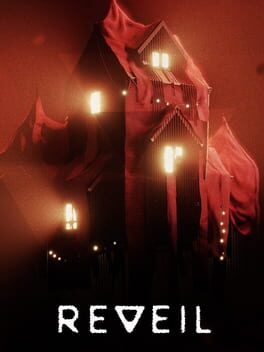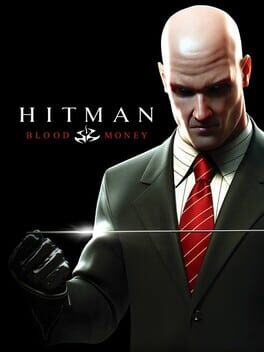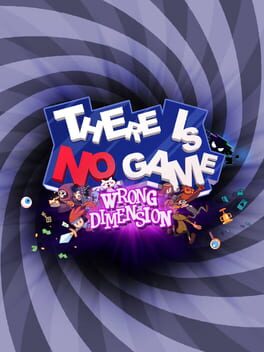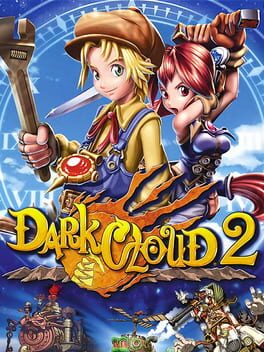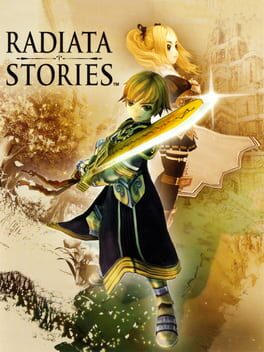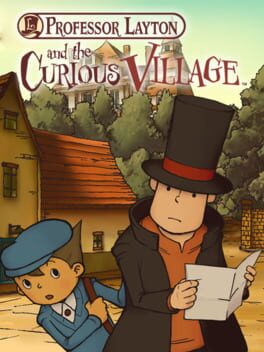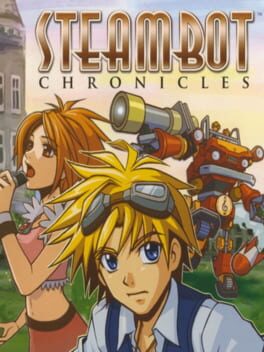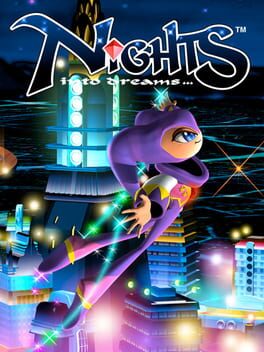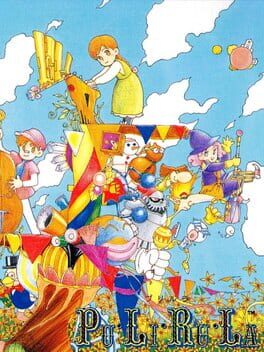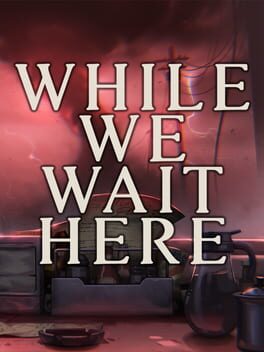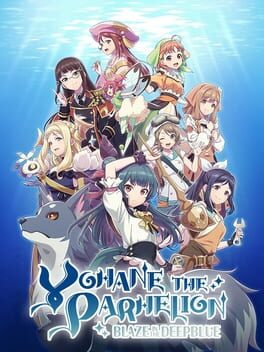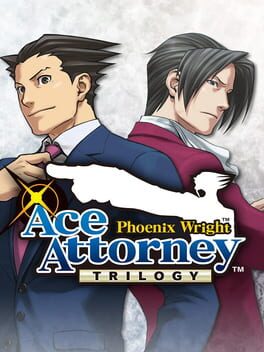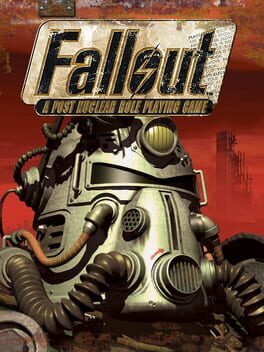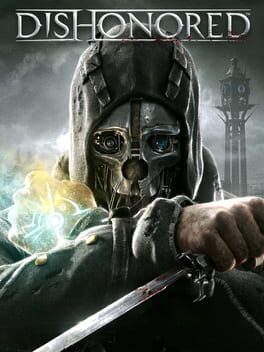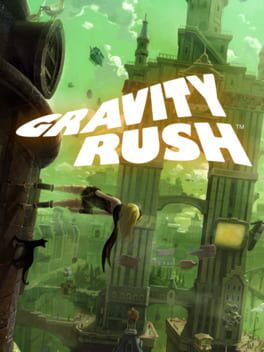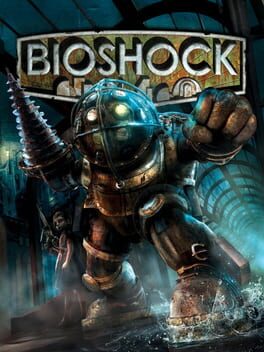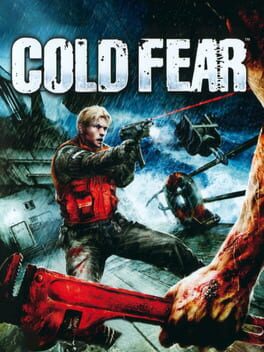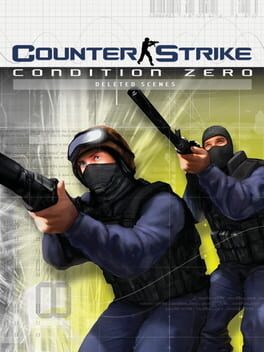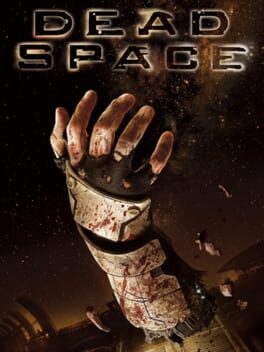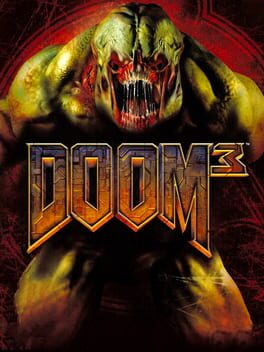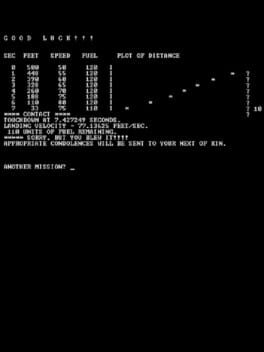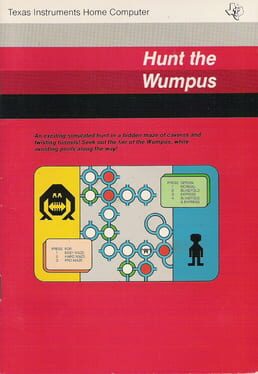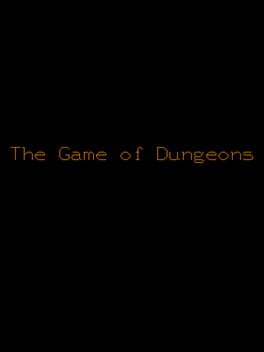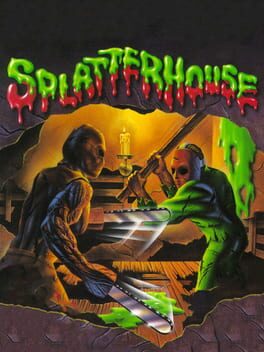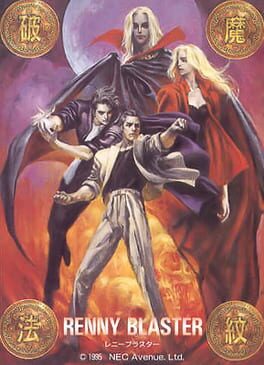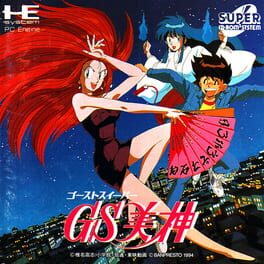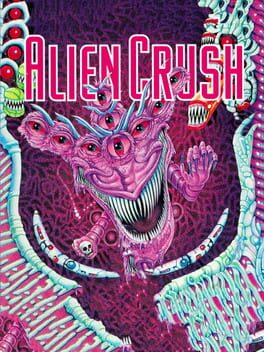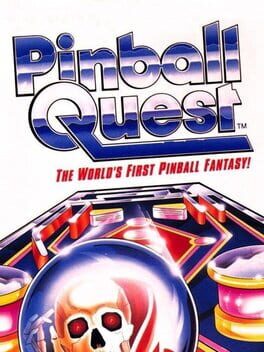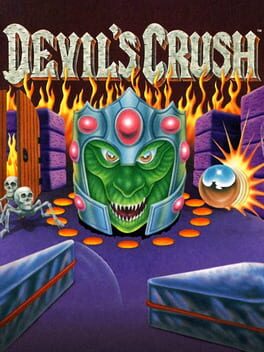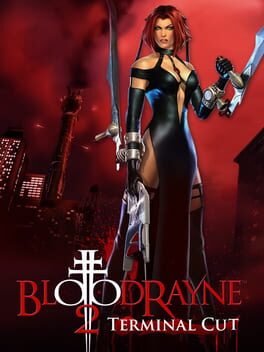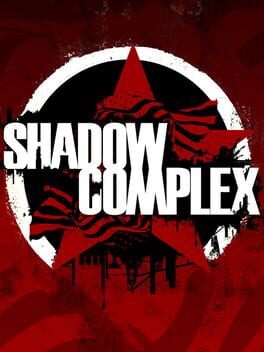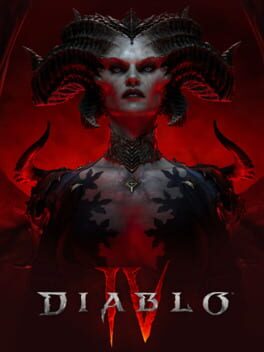Rezlo
BACKER
194 reviews liked by Rezlo
Isolomus
2020
Surrealism in gaming is fascinating to me. It's one thing to see a painting or photo, but to see it moving and interacting with it is a whole new scale. In my bottomless hunger for the surreal, dreamlike, and psychological in gaming, Isolomus fits a few of these categories. This claymation interactive art exhibit is not for those looking for a full-on game, puzzles, or even a story. There is a lot the player needs to interpret or just be square with not having an answer to. This is a game that can be completed 100% in less than an hour. My interpretation of the game is that it represents humans being slaves to our daily schedules and needs. I will leave it at that.
Each "cycle" of the game starts out the exact same, and there are two different endings. You just start clicking on objects on the screen. Squishing green men into blobs and then watching the "hub" of the day and night cycle as a man does a task you select. This can be eating, using a computer, looking out a window, brushing your teeth, etc. Each task is shown in full during the first cycle, and then you sleep. Once you sleep, you can choose two different doors. Once you start the next cycle, each activity is an interactive scene. I don't want to spoil them too much, but you need to figure out how to advance the scene by interacting with their objects in a certain manner. Each scene has two different endings, and how you interact determines that ending.
The entire game barely represents anything human or discernible to the human eye. Strange shapes, sounds, and the eerie, dreamlike soundtrack playing in the background will keep you glued to the screen just to see what whacky thing comes next. The animations are uncanny, inhuman, and downright bizarre, but that's what I love about this game, if you can even call it that. The gameplay here isn't much, but you still need to be curious and find new ways to interact with the game, which I found a lot of fun.
There is no dialog in the game or even any written text. Just grunts, sounds, and ambient music. Sometimes this is just what the doctor ordered. You can vibe out and relax in a game like this that doesn't require any skill to even interpret a story. This is a game that will stick with you. Maybe even more than a 50-hour-long AAA game. It's so strange and surreal that you will need to talk about it with somebody just to make sense of it all. Isomolus may not get the players or attention it deserves, but for $1, what more can you ask for? You can't buy anything for $1 anymore.
Each "cycle" of the game starts out the exact same, and there are two different endings. You just start clicking on objects on the screen. Squishing green men into blobs and then watching the "hub" of the day and night cycle as a man does a task you select. This can be eating, using a computer, looking out a window, brushing your teeth, etc. Each task is shown in full during the first cycle, and then you sleep. Once you sleep, you can choose two different doors. Once you start the next cycle, each activity is an interactive scene. I don't want to spoil them too much, but you need to figure out how to advance the scene by interacting with their objects in a certain manner. Each scene has two different endings, and how you interact determines that ending.
The entire game barely represents anything human or discernible to the human eye. Strange shapes, sounds, and the eerie, dreamlike soundtrack playing in the background will keep you glued to the screen just to see what whacky thing comes next. The animations are uncanny, inhuman, and downright bizarre, but that's what I love about this game, if you can even call it that. The gameplay here isn't much, but you still need to be curious and find new ways to interact with the game, which I found a lot of fun.
There is no dialog in the game or even any written text. Just grunts, sounds, and ambient music. Sometimes this is just what the doctor ordered. You can vibe out and relax in a game like this that doesn't require any skill to even interpret a story. This is a game that will stick with you. Maybe even more than a 50-hour-long AAA game. It's so strange and surreal that you will need to talk about it with somebody just to make sense of it all. Isomolus may not get the players or attention it deserves, but for $1, what more can you ask for? You can't buy anything for $1 anymore.
Ultros
2024
Ultros is at its core a Metroid-Vania but it doesn’t quiet follow a lot of the core mechanics that you’ve come to expect from the genre. Ultimately it excels at its presentation being one the most beautiful games I think I have ever played; the sound design is fantastic and the visual language is breathtaking. Unfortunately, Ultros is held back by a few odd mechanics and lack of clarity in its requirements of the player.
The first few hours of gameplay and exploration are honestly some of its best. You wake outside a crashed space pod in a hallucinogenic strange world with no direct and merely a puddle to view yourself in. Your only immediate option is to venture out into the organic depths below you and hope to make sense of what is going on. This is when you will be introduced to the games narrative and one of the few character that seem to be lurking in this ship of some kind. The narrative is present in written format where other characters will talk at you and you can see reactions from the players sprite. The story is generally quiet intriguing but seems to lose focus throughout the game. I had a general idea of what was happening but some of the characters and hidden lore seemed a little random or to vague for me to understand on a first playthrough.
The premise is some kind of time loop where you and everyone else is stuck re living a moment while a big ball creature (Ultros) grows in the middle of the ship. Almost ever character has no idea they are in a loop with the exception of one who seems to remember you after you progress the story. I believe there are possibly 2 or more endings to Ultros but unfortunately, I wasn’t particularly satisfied with the outcome I received.
The core objective seems to be killing or reviving 6 of these mummies that are linked to the big ball thing but I’m not really sure why. Once one of these mummies has been slain you go back to the big ball and the loop restarts with some dialog and cool visuals beforehand. Your options are to either slay all the mummies and end the game or once they have been killed bringing some kind of organic tether to them which will cleanse them in some way. Ultros expected you to figure out that this is an option purely by trial and error which could very easily be missed. I do like that this allows the player to pick if they want to put the effort in for an alternative ending but it becomes beyond tedious and for a smaller game there are very little resources online to help.
The exploration in Ultros is similar to your average Metroid-Vania but less focused on upgrading manoeuvrability and unlocking shortcuts. This became one of the first major problems I had with the game, it took so long to get anywhere fast and it was quiet exhausting to explore new paths. Instead, you are encouraged to use seeds that will grow into different kind of plants / trees providing vines to swing on or platforms to jump on. In concept, this is a really cool idea and it defiantly had moments that were quite impressive. However, some plants will take a time loop to fully grow meaning you are not able to use the new “shortcut” until you progress to the next loop. Similarly, this also became a problem when you are not sure what plant to grown where or you do not have the correct seed available to grow the required tree.
The previously mentioned tether that unlocks the alternative ending requires a strong knowledge of what plants to grow and paths to take. This is because you will be leading a tether from 1 area of the map to another in a plant-based daisy chain. Unfortunately, after a few hours of trying to figure out how to make this chain, the slow movement speed and lack of clear direction made me quit this endeavour and instead get the “bad” ending.
Initially while playing Ultros I was quiet impressed by the combat and encouragement to play well and with variety. The system they use rewards new combos and variety by giving better rewards based on how well you perform in combat. There's a mix of different doges, backsteps, stealth attacks, parry’s and much more which was initially quiet exciting. You unlock these moves and other abilities by leveling up your skill tree from eating a variety of grown fruits or carcases from the enemies you kill. However, the skill tree is very limited and you will quickly be maxing everything out as the consumables are also your healing items and there is a lot of them. I believe this is intentional though as when a loop is completed you will be returned to 0 skill points and no weapons as if you just restarted the game. Unfortunately though you can mitigate this almost completely, as with the use of additional hidden skill points found in the world this will keep any chosen skill permanently unlocked. This then feeds into another problem where you become either to strong in combat or you use a skill tree ability where most enemies will completely ignore the player; this allows you to waltz on right past them completely ignoring all future combat.
As I think back on my time playing Ultros I feel honestly more disappointed about what could have been than what has been. The beautiful visuals paired with some great combat ideas and an intriguing set up for a story sounds like a recipe for a brilliant game. But unfortunately Ultros just doesn’t deliver in the execution and that makes me really sad. I hope the small team continues to make games and refine their craft as there’s absolutely passion poured into Ultros and I would to see what’s next from the studio.
The first few hours of gameplay and exploration are honestly some of its best. You wake outside a crashed space pod in a hallucinogenic strange world with no direct and merely a puddle to view yourself in. Your only immediate option is to venture out into the organic depths below you and hope to make sense of what is going on. This is when you will be introduced to the games narrative and one of the few character that seem to be lurking in this ship of some kind. The narrative is present in written format where other characters will talk at you and you can see reactions from the players sprite. The story is generally quiet intriguing but seems to lose focus throughout the game. I had a general idea of what was happening but some of the characters and hidden lore seemed a little random or to vague for me to understand on a first playthrough.
The premise is some kind of time loop where you and everyone else is stuck re living a moment while a big ball creature (Ultros) grows in the middle of the ship. Almost ever character has no idea they are in a loop with the exception of one who seems to remember you after you progress the story. I believe there are possibly 2 or more endings to Ultros but unfortunately, I wasn’t particularly satisfied with the outcome I received.
The core objective seems to be killing or reviving 6 of these mummies that are linked to the big ball thing but I’m not really sure why. Once one of these mummies has been slain you go back to the big ball and the loop restarts with some dialog and cool visuals beforehand. Your options are to either slay all the mummies and end the game or once they have been killed bringing some kind of organic tether to them which will cleanse them in some way. Ultros expected you to figure out that this is an option purely by trial and error which could very easily be missed. I do like that this allows the player to pick if they want to put the effort in for an alternative ending but it becomes beyond tedious and for a smaller game there are very little resources online to help.
The exploration in Ultros is similar to your average Metroid-Vania but less focused on upgrading manoeuvrability and unlocking shortcuts. This became one of the first major problems I had with the game, it took so long to get anywhere fast and it was quiet exhausting to explore new paths. Instead, you are encouraged to use seeds that will grow into different kind of plants / trees providing vines to swing on or platforms to jump on. In concept, this is a really cool idea and it defiantly had moments that were quite impressive. However, some plants will take a time loop to fully grow meaning you are not able to use the new “shortcut” until you progress to the next loop. Similarly, this also became a problem when you are not sure what plant to grown where or you do not have the correct seed available to grow the required tree.
The previously mentioned tether that unlocks the alternative ending requires a strong knowledge of what plants to grow and paths to take. This is because you will be leading a tether from 1 area of the map to another in a plant-based daisy chain. Unfortunately, after a few hours of trying to figure out how to make this chain, the slow movement speed and lack of clear direction made me quit this endeavour and instead get the “bad” ending.
Initially while playing Ultros I was quiet impressed by the combat and encouragement to play well and with variety. The system they use rewards new combos and variety by giving better rewards based on how well you perform in combat. There's a mix of different doges, backsteps, stealth attacks, parry’s and much more which was initially quiet exciting. You unlock these moves and other abilities by leveling up your skill tree from eating a variety of grown fruits or carcases from the enemies you kill. However, the skill tree is very limited and you will quickly be maxing everything out as the consumables are also your healing items and there is a lot of them. I believe this is intentional though as when a loop is completed you will be returned to 0 skill points and no weapons as if you just restarted the game. Unfortunately though you can mitigate this almost completely, as with the use of additional hidden skill points found in the world this will keep any chosen skill permanently unlocked. This then feeds into another problem where you become either to strong in combat or you use a skill tree ability where most enemies will completely ignore the player; this allows you to waltz on right past them completely ignoring all future combat.
As I think back on my time playing Ultros I feel honestly more disappointed about what could have been than what has been. The beautiful visuals paired with some great combat ideas and an intriguing set up for a story sounds like a recipe for a brilliant game. But unfortunately Ultros just doesn’t deliver in the execution and that makes me really sad. I hope the small team continues to make games and refine their craft as there’s absolutely passion poured into Ultros and I would to see what’s next from the studio.
Reveil
2024
Reveil é um jogo com duas ou 3 camadas de jogos que praticamente todos conhecem, o início tem um bom terror psicológico, mantendo a imersão e o mistério na história, isso tem a cara de Layers of fear.
Depois temos um suspense e algumas cenas ala Outlast (o final do jogo me lembra demais o Outlast 1), e um terceiro tipo é o mistério de jogos do gênero walking simulator.
No final Reveil é uma boa história de um pai a procura da sua família, temos aqui um plot muito interessante que vai além do "preciso salvar minha família", joguem quando possível.
Depois temos um suspense e algumas cenas ala Outlast (o final do jogo me lembra demais o Outlast 1), e um terceiro tipo é o mistério de jogos do gênero walking simulator.
No final Reveil é uma boa história de um pai a procura da sua família, temos aqui um plot muito interessante que vai além do "preciso salvar minha família", joguem quando possível.
Content Warning
2024
To preface, I feel a bit bad writing this review. I like articulating my thoughts on games but at the end of the day I played this with some friends (who, thank goodness, don't know about this account) and am subsequently compelled to talk shit about it, maybe as a warning to other prospective players, maybe just for talking's sake. Anyways!
I didn't really know anything about this game going in, but I downloaded it for free on April Fool's, an April Fool's which kind of passed me by in comparison to others. After that day - which I didn't know until the time of writing but was the release day of the game overall - the price was hiked up to 10 dollars. Even trying to apply Hanlon's razor I can't really see this as much besides a cynical carpet-pull, a spur-of-the-moment reaction to the unprecedented success of their April Fool's game; whether it was to fund the game servers or simply to make a killing I couldnt say, but the impression persists.
I hate to be surely the billionth person to make this comparison - no less to a game I haven't played - but this follows in Lethal Company's stride as a co-op horror game with proximity voice chat, about exploring grim environments, finding artifacts and surviving encounters with monsters. The main difference is the addition of an in-game camera, the motivation behind your escapades being to gain views in the game's universe, funding future exploits. This feature allows you to save the videos you record in the game to your computer which I really appreciate; any kind of game that generates media like this (drawings in skribbl.io or Gartic Phone, replays in Super Smash Bros., etc.) gets at least a few points for me.
Sadly my praise for the game ends there.
When the emphasis is so heavily put on the players to "be funny" for an invisible audience all the sense of exploration in the game pretty much immediately feel dry and manufactured, the slippery controls and emphasis on physical darkness further pushing this absolutely stilted horror aspect where (seemingly) random audio cues and random things coming at you from the darkness and killing you comprises the horror aspect of this game.
I'm not huge on the monsters themselves either; they come from the DOORS on Roblox camp of monsters that come at you from nowhere, that you stand no chance against until you find out their "quirk", usually from a scholarly friend as opposed to any in-game learning experience. Most monsters, after they've had their fun with you, either kill you outright or separate you from the group, severing you from the camera and thus the object of the game.
The camera being a physical object in the game world is a fun idea, the real camera shake and angles that this allows in replays is honestly nice, but at the same time I feel like it puts an unfair emphasis on one player as the anchor of the group, everyone else orbiting around them and hoping they aren't separated. Because once you are separated, there's pretty much nothing to do except try and retrace your steps, or sit around in the post-game chat doing literally nothing. Maybe something like randomly switching who owns the camera - perhaps upon detecting a splinter in the group - but where it stands it makes half the game for half the players, at least in my eyes, dreadfully boring.
All in all this, for me, was a free game. I'm glad I played it for the short time I did, but 5 in-game rounds was enough for me to grow tired of the game; which I suppose is OK for a free novelty game, but for a commercial product is another prospect entirely.
I didn't really know anything about this game going in, but I downloaded it for free on April Fool's, an April Fool's which kind of passed me by in comparison to others. After that day - which I didn't know until the time of writing but was the release day of the game overall - the price was hiked up to 10 dollars. Even trying to apply Hanlon's razor I can't really see this as much besides a cynical carpet-pull, a spur-of-the-moment reaction to the unprecedented success of their April Fool's game; whether it was to fund the game servers or simply to make a killing I couldnt say, but the impression persists.
I hate to be surely the billionth person to make this comparison - no less to a game I haven't played - but this follows in Lethal Company's stride as a co-op horror game with proximity voice chat, about exploring grim environments, finding artifacts and surviving encounters with monsters. The main difference is the addition of an in-game camera, the motivation behind your escapades being to gain views in the game's universe, funding future exploits. This feature allows you to save the videos you record in the game to your computer which I really appreciate; any kind of game that generates media like this (drawings in skribbl.io or Gartic Phone, replays in Super Smash Bros., etc.) gets at least a few points for me.
Sadly my praise for the game ends there.
When the emphasis is so heavily put on the players to "be funny" for an invisible audience all the sense of exploration in the game pretty much immediately feel dry and manufactured, the slippery controls and emphasis on physical darkness further pushing this absolutely stilted horror aspect where (seemingly) random audio cues and random things coming at you from the darkness and killing you comprises the horror aspect of this game.
I'm not huge on the monsters themselves either; they come from the DOORS on Roblox camp of monsters that come at you from nowhere, that you stand no chance against until you find out their "quirk", usually from a scholarly friend as opposed to any in-game learning experience. Most monsters, after they've had their fun with you, either kill you outright or separate you from the group, severing you from the camera and thus the object of the game.
The camera being a physical object in the game world is a fun idea, the real camera shake and angles that this allows in replays is honestly nice, but at the same time I feel like it puts an unfair emphasis on one player as the anchor of the group, everyone else orbiting around them and hoping they aren't separated. Because once you are separated, there's pretty much nothing to do except try and retrace your steps, or sit around in the post-game chat doing literally nothing. Maybe something like randomly switching who owns the camera - perhaps upon detecting a splinter in the group - but where it stands it makes half the game for half the players, at least in my eyes, dreadfully boring.
All in all this, for me, was a free game. I'm glad I played it for the short time I did, but 5 in-game rounds was enough for me to grow tired of the game; which I suppose is OK for a free novelty game, but for a commercial product is another prospect entirely.
Here it finally is! I had so many great memories with Oblivion back in 2007. I could go on and on about that game, but the fifth game in the series is before us and has taken the world by storm. From creating internet memes to lots of weird videos on YouTube, Skyrim is a behemoth that even non-gamers couldn’t ignore. Skyrim takes place in well, Skyrim, which is north of Cyrodiil. Cyrodiil was where Oblivion was set in, but Skyrim is also set 200 years after those events. Of course, they are talked about in Skyrim, but time isn’t the only change in the game.
You are the Dragonborn, or Dovahkiin, who has the power of the Thu’um which means you can shout like a dragon. This is actually a major gameplay element in the game as well as fighting dragons. The map may seem smaller than Cyrodiil, but there is a lot more content in the game. I spent 108 hours on Skyrim and that was 90% completion of side quests, areas discovered and finishing the main story. I finished at level 45 and had almost 100,000 gold. In Oblivion I was able to finish the game about 95% in 50 hours. That lets you know how much more content there is, so you will be busy for months.
Let’s talk about combat first. The game still has the third/first person melee combat like the past two games, but it has been revised. The combat feels smoother, and not so much like you’re playing whack-a-mole. There are more elements involved behind the engine, but the thing you will see the most is the perk system that is borrowed from the Fallout series. When you level up you look to the sky and have a bevy of different areas to gain perks in magick areas, combat, defense, and even blacksmithing (more on that later). Concentrate on one area and try to get as many perks as you can. This gets rid of the system from Oblivion where you can only level up something if you use it like jumping around like a bunny to increase endurance etc. If you use light armor you will gain levels (up to 100 in every category) in that area. Use two-handed weapons or destruction spells and you will gain levels quickly. The perks allow you to gain and build on that area instead of solely relying on users to gain levels.
Of course, there are new enemies in the game like Draugrs and dragons. Dragons should be avoided early on until at least level 10 because you will die in one hit. Once you kill these beasts you gain their soul and can use it to unlock dragon shouts. Shouts consist of powers like Unrelenting Force, Slow Time, and Fire Breath. Each shout has three levels, but you need to find those words by exploring dungeons throughout the world. Dragons are just awesome creatures to fight because they are the biggest enemy ever put into a TES game. Of course, you need to watch out for wildlife like bears, crabs, leopards etc. The world of Skyrim is dangerous and cold so beware. Sneaking is still a huge problem because it seems no matter how high your sneak skill is you still get caught, especially pick pocketing.
Factions are a huge part of TES and Skyrim doesn’t leave you out. The thieves, dark brotherhood, mages, and fighters guild are all here, but bigger and better. The stories are more fleshed out and are a lot longer plus your rewards are better. The Dark Brotherhood and Thieves Guild stories were my favorites, and show you just how deep into the lore and story you can get. Everything else from past TES games you remember is here like choices during dialog, but thankfully the whole persuasion mini-game is gone from Oblivion. There are a lot more main characters, and the voice acting is more varied, but everyone has Nordic accents because Skyrim has a Viking/Nordic setting which is a huge departure from Oblivion‘s strictly medieval tone.
Looting is a huge part of TES and Skyrim doesn’t disappoint here. There is so much to loot that even 100 hours in you will still scour every nook and cranny for stuff to sell at shops. Lockpicking has been improved and is much quicker this time around. Menus have also been improved with a nice four-way system leading to items, magic, map, and skills. This gets rid of Oblivion‘s awful Excel sheet type menus. Of course, my complaint here is that you can’t compare items anymore which is a major pain. You have to remember stats which is a bigger pain when shopping.
Skyrim has a forging system where you can get ingots for various medals as well as leather. Use these to forge weapons and armor in different categories like Daedric, Leather, Studded, Iron, Glass, Ebony etc. You can upgrade these on benches for armor and grindstones for weapons. This makes the whole armor and weapon system feel more custom-made to your liking instead of just what is out there. The armor and weapons are over double what is in Oblivion. Those are all the major changes in Skyrim, but there is so much detail here that you have to play the game to truly see what I am talking about. You can even read every single book in the game there is so much detail here. Fans of the series will love the deepened and richer lore of the races and part of the TES series. There are tons of that here. You even get to explore ancient Dwemer (Dwarven) ruins.
Horseback riding is back, and even the third person view has been greatly improved as well as animations. There are so many major changes as well as minor changes, that I can’t even remember them all. However, there is a huge issue with this game and that is bugs. There were so many bugs upon release that stopped quests from continuing, quest items being lost, stuck in areas, graphics bugs, dragons flying backward, and everything else you can imagine. Even after a few patches, there are still some bugs, and probably a few that will never be fixed. This is unacceptable even for a large game like this. Thankfully there is a huge mod community that fixed a lot of this first, but the stock game has problems that the console gamers can’t fix.
The models are still ugly, and the woman still looks like men. PC gamers get high-resolution textures which make the game look amazing, but the consoles are stuck with low-res graphics that look kind of dated. The lighting is Skyrim is great, but with so many issues cosmetically you really should get the PC version. Mods out there transform women into beautiful heroines straight out of comic books, amazing new armor, new lighting and graphical effects etc. The stock game is really lacking technically and that disappointed me quite a bit. If you can look past all this Skyrim is one of my favorite RPGs of all time and sits right up there with Oblivion.
Collector’s Edition: Hardcore fans may want to drop the extra $90 for the monster collector’s edition. You get a giant statue of Alduin that is an in-game model, a giant coffee table style art book, a making-of-DVD, and a steel book case. The statue is worth the extra money itself and it looks amazing. Of course, this is for hardcore fans only, but good luck finding one.
You are the Dragonborn, or Dovahkiin, who has the power of the Thu’um which means you can shout like a dragon. This is actually a major gameplay element in the game as well as fighting dragons. The map may seem smaller than Cyrodiil, but there is a lot more content in the game. I spent 108 hours on Skyrim and that was 90% completion of side quests, areas discovered and finishing the main story. I finished at level 45 and had almost 100,000 gold. In Oblivion I was able to finish the game about 95% in 50 hours. That lets you know how much more content there is, so you will be busy for months.
Let’s talk about combat first. The game still has the third/first person melee combat like the past two games, but it has been revised. The combat feels smoother, and not so much like you’re playing whack-a-mole. There are more elements involved behind the engine, but the thing you will see the most is the perk system that is borrowed from the Fallout series. When you level up you look to the sky and have a bevy of different areas to gain perks in magick areas, combat, defense, and even blacksmithing (more on that later). Concentrate on one area and try to get as many perks as you can. This gets rid of the system from Oblivion where you can only level up something if you use it like jumping around like a bunny to increase endurance etc. If you use light armor you will gain levels (up to 100 in every category) in that area. Use two-handed weapons or destruction spells and you will gain levels quickly. The perks allow you to gain and build on that area instead of solely relying on users to gain levels.
Of course, there are new enemies in the game like Draugrs and dragons. Dragons should be avoided early on until at least level 10 because you will die in one hit. Once you kill these beasts you gain their soul and can use it to unlock dragon shouts. Shouts consist of powers like Unrelenting Force, Slow Time, and Fire Breath. Each shout has three levels, but you need to find those words by exploring dungeons throughout the world. Dragons are just awesome creatures to fight because they are the biggest enemy ever put into a TES game. Of course, you need to watch out for wildlife like bears, crabs, leopards etc. The world of Skyrim is dangerous and cold so beware. Sneaking is still a huge problem because it seems no matter how high your sneak skill is you still get caught, especially pick pocketing.
Factions are a huge part of TES and Skyrim doesn’t leave you out. The thieves, dark brotherhood, mages, and fighters guild are all here, but bigger and better. The stories are more fleshed out and are a lot longer plus your rewards are better. The Dark Brotherhood and Thieves Guild stories were my favorites, and show you just how deep into the lore and story you can get. Everything else from past TES games you remember is here like choices during dialog, but thankfully the whole persuasion mini-game is gone from Oblivion. There are a lot more main characters, and the voice acting is more varied, but everyone has Nordic accents because Skyrim has a Viking/Nordic setting which is a huge departure from Oblivion‘s strictly medieval tone.
Looting is a huge part of TES and Skyrim doesn’t disappoint here. There is so much to loot that even 100 hours in you will still scour every nook and cranny for stuff to sell at shops. Lockpicking has been improved and is much quicker this time around. Menus have also been improved with a nice four-way system leading to items, magic, map, and skills. This gets rid of Oblivion‘s awful Excel sheet type menus. Of course, my complaint here is that you can’t compare items anymore which is a major pain. You have to remember stats which is a bigger pain when shopping.
Skyrim has a forging system where you can get ingots for various medals as well as leather. Use these to forge weapons and armor in different categories like Daedric, Leather, Studded, Iron, Glass, Ebony etc. You can upgrade these on benches for armor and grindstones for weapons. This makes the whole armor and weapon system feel more custom-made to your liking instead of just what is out there. The armor and weapons are over double what is in Oblivion. Those are all the major changes in Skyrim, but there is so much detail here that you have to play the game to truly see what I am talking about. You can even read every single book in the game there is so much detail here. Fans of the series will love the deepened and richer lore of the races and part of the TES series. There are tons of that here. You even get to explore ancient Dwemer (Dwarven) ruins.
Horseback riding is back, and even the third person view has been greatly improved as well as animations. There are so many major changes as well as minor changes, that I can’t even remember them all. However, there is a huge issue with this game and that is bugs. There were so many bugs upon release that stopped quests from continuing, quest items being lost, stuck in areas, graphics bugs, dragons flying backward, and everything else you can imagine. Even after a few patches, there are still some bugs, and probably a few that will never be fixed. This is unacceptable even for a large game like this. Thankfully there is a huge mod community that fixed a lot of this first, but the stock game has problems that the console gamers can’t fix.
The models are still ugly, and the woman still looks like men. PC gamers get high-resolution textures which make the game look amazing, but the consoles are stuck with low-res graphics that look kind of dated. The lighting is Skyrim is great, but with so many issues cosmetically you really should get the PC version. Mods out there transform women into beautiful heroines straight out of comic books, amazing new armor, new lighting and graphical effects etc. The stock game is really lacking technically and that disappointed me quite a bit. If you can look past all this Skyrim is one of my favorite RPGs of all time and sits right up there with Oblivion.
Collector’s Edition: Hardcore fans may want to drop the extra $90 for the monster collector’s edition. You get a giant statue of Alduin that is an in-game model, a giant coffee table style art book, a making-of-DVD, and a steel book case. The statue is worth the extra money itself and it looks amazing. Of course, this is for hardcore fans only, but good luck finding one.
Skyrim is the kind of game that just sucks you in. Sure, it's old, the bugs are legendary, and the combat can be kinda clunky, but man... that feeling of exploring a massive world, building any kind of character you want, and going on epic quests? It's timeless. Even with some dated mechanics, Skyrim still gets me hyped, and if you've missed out all this time, grab a copy with all the DLC and dive in!
Hitman: Blood Money
2006
Hitman: Blood Money is a classic. The freedom in how you approach each hit is insane! Disguise yourself, sneak around, poison food, rig accidents... they really nailed that methodical assassin gameplay. It definitely shows its age a bit with some wonky graphics and controls, and the story is kinda forgettable. But for that pure Hitman experience of planning and executing creative kills in sandbox levels, it's still top-notch.
NOTE - there are two versions of Gothic that come with the Gold Edition -- the vanilla release as well as Night of the Raven, the latter being a lite-remaster that adds a new chapter/area called Jharenkar whilst concurrently upping the difficulty. If you get the Gold Edition, please understand that you can only play one version of the game over the other as they are treated as separate titles without carryover files. Obviously, based on my rating, you can tell I don’t recommend either, but NOTR even less due to it making an already challenging game pointlessly difficult
Gothic 2 is the kind of game I feared the original Gothic would wind-up being: an outdated CRPG ripe with fetch quests and pointless loot galore. Granted, I obviously had enough problems with the first to abstain from a full-on endorsement; however, I can’t deny its end product was vastly different from those initial worries: occupying a revolutionary Eurojank format chock-ful of unique systems.
Unfortunately, the sequel forgoes all those interesting tidbits in favor of a relatively-standard release that would’ve been fine had it not been for the presence of defects in almost all its major facets, beginning with the overworld. Gothic 2 is arguably twice as big as its predecessor, yet makes the genius decision to not only undercut your speed, but deny you access to quick travel options well until the third chapter. True, the first game did this as well, but because its realms were much smaller, it never felt excessively impeding - you could dart between the three major camps without ever worrying about the 24-hour cycle looming past you. Gothic II, au contraire, is far more triple-spaced, meaning you’re liable to getting lost in places you most definitely don’t want to be in when night rolls over. And look, that by itself isn’t a bad thing (the hallmark of most open world games is the freedom to wander about aimlessly after all), but when you’re forced to backtrack for tens of minutes on end just to reach the safety of a town or find the next big civilization, it gets frustrating very quickly, and I consequently have no regrets about exploiting waypoint commands.
I mentioned earlier that your velocity has been undercut this time around, and while slower walking does exacerbate those distance qualms, the real issue with it is it forces you into combat scenarios. In the first Gothic, you couldn’t harm a Blood Fly without getting one-hit-KOed, but that was at least mitigated by the ability to outrun 99% of foes until you got stronger.
In developing Gothic II, though, Piranha Bytes have swapped to a combat-focused schema that fails to make the necessary adjustments for such a genre, opting for this weird in-between wherein your weaknesses are contrasted with the ability to dodge, parry, and critical hit. There’s a bit of a FromSoftware motif here in the form of enemies, both human and nonhuman, having unique attack patterns; however, it’s not been ironed out, leading to a lot of good and bad. On the plus side, you get armor early-on and can pretty easily block-spam most humans, but on the negative side, critical hits are haphazard and monsters so erratic, the bulk are impossible to “figure out”. This is a game where you constantly have to save scum because you just never know when someone or something will gain the RNG upper hand and knock your health bar down with a single blow (and when those moments occur, it’s beyond frustrating). Be prepared to hoard a bunch of food for post-battle recovery as every 1v1 skirmish turns into a pyrrhic victory.
Speaking of 1v1, Gothic II once again thrives on this approach to fighting, and once again is deliberately obtuse about it. You’re rarely going to encounter a single enemy by itself: whether it’s bandits, goblins, scavengers, or orcs, they’re always going to be in groups of 3 or more, and I don’t understand why the devs thought this would be a good idea when they blatantly geared their combat system towards personalized duels. Even when you get sufficiently strong, you’re literally forced to cheese the game because your character is simply incapable of fighting multiple foes at once - your stepbacks are too short for evading, you autolock onto singular enemies, and sword strikes only slice one entity/each. So yeah, be prepared to engage in such annoying tactics as inching closer-and-closer to trigger a lone monster’s vision cone, or humping boulders & tree trunks in the hopes of exploiting enemy pathing issues (oh, and to add salt to the wounds, the game deliberately undercuts your damage output when facing parties compared to isolated foes).
Now you may be thinking, well Red, you’re just speaking about the melee - surely players are meant to combine this skill with archery and magic for success? Well no. While archery is more useful this time around (if only because there’re less-ranged foes), it’s hampered by three factors: one, limited skill point acquisition that prevents sufficient investment in both paths; two, the necessity of a secondary skill called dexterity for arrow damage increase; and three, swapping between tools being a decidedly-elongated process hostile to dual-tactics.
Magic, on the other hand, has been completely upended this time around via Piranha Bytes opting for outdated class specialization. See, if you don’t join the Fire Mage Guild in the first chapter (more on that later), you lose access to most offensive spells: like literally, you’re unable to use them, even if you have sufficient mana and the requisite scroll. Sure, you can still do summons, but, outside of demons (which are hard to come by), they aren't a huge help against those aforementioned hordes.
On the topic of guilds, Gothic II further peeved me by not properly outlining the presence of the other factions. In the first Gothic, you were explicitly told by Diego about the different camps and how you were meant to choose one. Here, though, you’re made highly-privy to the Paladin Way via Xardas mandating you deliver a message to their head regent - when you arrive there, you’re informed that the only to pass on this missive is to join the City Guard and become a citizen of Khorinis. The Mages are briefly mentioned if you talk to one of the adjacent representatives, but considering the dangerous distance to the location (as well as the nonsensical entrance fee of 1000 gold + a sheep), it’s not exactly an open path compared to being a Guardsman.
The Mercenaries are a bit easier to join given Lares’s offer to escort you to their leader; however, unlike Gothic 1, where Mordrag took you directly to the New Camp, Lares leaves you behind a good ways away from the mercenary headquarters, and I consequently was unable to find the man until well-after I had joined the Khorinis Militia. But even if I hadn’t, I don’t see why I, as a player, would’ve considered joining them when the militia being at odds with the mercs implied that doing-so would’ve made it impossible to dispatch the letter for story progressment. Yes, I know now that there would’ve been some avenue for success, but the point I’m trying to make is that Gothic II just isn’t as framed as well as its predecessor, with these obscurity methods coming across like goaded attempts at encouraging multiple playthroughs.
As a result, I can’t give an accurate assessment about the narrative in terms of how it differs in that initial act. With regards to the consequent chapters (assuming the story beats remain the same), though, I can tell you that Gothic II is an utterly boring, fetch quest extravaganza. I hate making constant comparisons to its predecessor, but to see such a noticeable drop can’t help begetting these mandates- before your Nameless Hero felt like he was forging his own arc amidst the brave new world he was trapped in. Gothic II, on the other hand, is content with having you play errand boy for almost every single figure you come across: you’re first doing the bidding of Xardas by delivering his memo to the Paladin Commander, then are forced to do arduous tasks for the merchants within Khorinis in order to obtain citizenship, then are tasked with doing MORE bidding for the Commander by conducting a scouting mission to the previous game’s area , then have to do, you guessed it, another set of chores for the Paladins and mages, then rinse-and-repeat until the last saga wherein your protagonist finally grows a pair and takes initiative into his own hands (though by then it’s obviously too little too late).
It’s a shame because there was so much potential here with regards to what could’ve happened following the fall of the barrier and all these criminals and gangs running free, but no, the writers evidently thought it better to forgo that in favor of a generic fantasy yarn (which, on its own, might’ve been fine were it not for the whole indentured servitude schematic). Some of the NPCs you meet are kind of interesting, you finally get a decent reason for why your Hero isn’t named, and it was admittedly cool seeing what happened to your allies/nemeses from the first game. But overall the endeavor was just very forgettable (and yes, this applies to the sidequests too).
Gameplay, despite the flaws I touched on earlier, has seen some improvements from Gothic 1. For starters, the useless skills of sneaking, lock bumping, and pickpocketing have been converted into singularly-learned talents that actually serve a purpose in certain quests. Secondly, 1h and 2h weaponry are equally-useful methods for dispatching foes, with upgrades to one partially carrying over to the other (at a ratio of I believe 5:1 skillpoints). Thirdly, as I alluded to in my rant above, you can actually take more than one-strike now without dying, which SIGNIFICANTLY helps in leveling-up quicker compared to before. Finally, the revamped combat is quite fun, occupying a fencing-style of play that risks/rewards lunges-and-retreats. As you upgrade your swordwielding, the game also provides visible feedback via faster drawing, swiping, and new combos.
Unfortunately, that’s about all the praise I got as everything else is either mediocre or an infringement upon the game’s fun factor. To run down the list: there’s no quick save/load option, you can only cook & brew one item at a time, leaves & foliage outright block your vision during combat, executions have been removed(+), you can’t dual-wield swords with torches for night fights, and you’re unable to sync the attack and action buttons to the same prompt (something that genuinely makes no sense given that you can’t even do actions when you have your blade out).
Worst of all, there’s no sense of difficulty scaling in the narrative - in G1, yeah every enemy was annoying on some level, but they were at least restricted to their respective areas of influence, and the story appropriately structured your mandatory encounters with them.
In the sequel, though, you can happen upon a troll or skeleton medley, or find a swarm of blood flies right next to a pack of snappers, all in the most random of places. One of the worst decisions has you in the second chapter, let me repeat, in the second chapter, sent off to maneuver around the Orc Army, and it honestly stands as one of the most vexing experiences I have ever had in a video game - to be forced to run around these behemoths spammed everywhere with no method of fighting back(++). There had to have been some cut survival horror elements as I just don’t see why anyone at Piranha Bytes believed this would be a good idea in the slightest - imagine encountering the Trigen within the first third of Far Cry and you’ll get an idea of my frustration.
If all that weren’t enough, exploration is rendered worthless as, just like in the first Gothic, the only things you’re privy to finding in the open world are lone caves ripe with repetitive loot. On that note, expect a cluttered inventory due to the sheer amount of pointless garbage you're liable to discovering on corpses and chests alike, from gems to various meats. True, G1 also had similar problems, but there was at least a unique bartering schematic wherein you could trade this stuff for an item you wanted - Gothic 2 reverts to a standard monetary system that ultimately requires you to sell this stuff for cash to then use for purchasing, turning a simple back-and-forth enterprise into a padded-out middle man approach.
Graphically, Gothic II continues to stumble as it’s just not at the level of its contemporaries, let alone something that’s aged well. Now look, part of me actually appreciated the aesthetics due to them blatantly resembling RuneScape right down to the font-type (I wouldn’t be surprised if Jagex and Piranha Bytes’ artists came from the same school of design), but objectively the modeling is pudgy, animations stilted, shadows circular blobs, and the vast majority of monster designs either rehashed or uninspired. Most of the texture work is admittedly pristine, with castles, villages, mountains, and ponds rendered quite well; however, there’s nothing about their surrounding biomes that makes them stand apart from your usual fictional settings, and a fair amount are unfortunately adorned with blatantly painted-on simulacra versus individually-composited objects (stone veins, floor bones, door locks). You also have a ton of repetitive knickknacks and buildings plastered in the majority of locations: expect to see the same farmhouses, Shadowbeast mounts, treasure chests, flowery lion busts, and Angel/Demon paintings despite their presence in varied locations.
Gothic II also suffers from a few minor, yet noticeable, technical issues you’ll have to contend with, namely the poor draw distance, animation lags (for candle flames, large oceans and at-distance NPCs), as well as incessant clipping. They won’t bring down the experience by any means, but are worth noting for the sake of knowledge.
Don’t get me wrong, there are some amazing feats like the phenomenal textiles, moving clouds, dynamic lighting, presence of raindrop/snowflake impacts, and how looking up at the sun turns the screen yellow. And for all my complaints about the repetitive interior layouts, the artisans went all out for that final dungeon wherein you’re privy to some gorgeously-grisly details ala torture chambers with displaced skeletons, walls laden with chiseled runes, and giant knight statutes with glaring red eyes. I just wish that same effort had been put into the preceding locales.
SFX is a bigger letdown, containing some of the worst noises for monsters I’ve ever had the misfortune to hear in gaming. Orcs and dragons are decent, but every other enemy resounds like a conventional noise bumped up several decibels: expect to cover your ears when facing scavengers (roosters), lurkers (snorting pigs), blood flies (bass drums), and goblins (literally like someone farting through a french horn). In addition, footsteps are heavily muffled and grass rustling clearly recreated via a candy wrapper being rubbed against the boom mic.
When you’re in towns, the soundscape fares better despite its volatility - I loved hearing the workings of a smithery, mixturing of alchemists, and liveliness of taverns. Outside the walls, things like the flow of water, crashing of waterfalls, wavering of rope bridges, diverse footstep dins, and even varied food eating crunches were also great. However, as an overall enterprise, the game is too crowded with those aforementioned beastly wails that get very grating very fast.
Voice acting, at the least the English dub I played, wasn’t very good either, with Piranha Bytes (or whoever handled the localization) not only recasting some of their previous characters with worse VAs (Lares, Diego), but also going TES route via having a select few actors do every single voice. This would’ve been fine had there been proper ADR direction, but the lip syncing is terrible and performances fluctuating - the more talented people are obviously solid; however, because the parts were clearly handed-out haphazardly, you get a scattershot inconstancy similar to Horizon Zero Dawn wherein some random joe will sound more immaculate than a major character.
Prince Charming returns as the Nameless Hero, and he’s one of those thespians I imagine could have been great with proper direction as he actually has the right chording for the script, yet flounders around way too much to render the guy a memorable protagonist of early-2000s gaming. What I mean is he does a fair job granting the Hero an everyman cadence, but the second he tries acting tough (particularly against the dragons), oh man, cringe doesn’t even begin to describe things.
Lastly, there’s the music by Kai Rosenkranz, and it’s satisfactory to a fault. A large chunk of it comes across like elongated overworld themes (your typical hodgepodge of horned melodies interrupted by guitar chords or vice-versa), but because of all the backtracking, you’ll be hearing the same tunes on-repeat, and while they never get grating, it serves to hammer in the point that the music is inherently lacking any kind of grandiosity. It doesn’t sound like you’re on a big adventure, but instead a small-scale journey with occasional strife (and yeah, I guess that makes the OST technically accurate to the game, but my point is it could have elevated things).
So in the end, Gothic II is not worth playing. It’s a step-down from its predecessor in almost every major venue, a title that, itself, was too flawed to be worth recommending. There are things I admire, and I can definitely see where the influence on later RPGs came from - there’s just a good chance that those games are better worth your time than this one.
Take this as a forewarning - when a non-Metroid game opens up with your character literally being stripped of their abilities for no other reason than a lazy respec, it’s a harbinger of bad things to come.
NOTES
+You’re able to execute certain NPCs, but not everyone like in G1. You have the option to flip to Gothic 1’s combat system, but I doubt this would’ve granted the ability.
++The worst part is the average player would have no way of knowing that you require speed potions to outrun the orcs as the game gives no indication of such (worse still, I don’t even know how you’d obtain the chemicals due to both higher-level alchemy apprenticeships being locked off and there being very few vendors on site [thank the Lord for console commands!]). The slew of apologists out there will claim you’re meant to use specially-marked pathways to avoid the orcs, but I can tell you there are no such things minus the initial entryway into the Valley of Mines. And even if there were, the fact that you’re granted no freedom to traverse the place willy-nilly whilst having to continuously look over your shoulder is just not fun in the slightest (at least in an action video game). I’ve also heard claims that you’re meant to employ sleeping spells, but as far as I could tell, these don’t have a huge range and would be futile against a clan of brutes + shamen.
-One of my favorite Eurojank moments occurs whenever you try to long-jump at a wall corner as it results in your character flying over it (and then some!).
-You’ll encounter a number of crates sparkling with that shimmer effect Disney used to employ in their cartoons back-in-the-day.
-Speaking of Disney, tell me the JoWooD Productions animation logo wasn’t inspired by the classic Disney World castle one?
-Gothic II boasts a few solid CG cutscenes.
-NPC patterns are pretty varied: you’ll see them chat, go about their workday, eat food, enjoy the nightlife, relieve themselves, and of course sleep. It’s a shame their convos with each other are so dang repetitious.
-If you reload a save file, any spell you’ve cast or torch you were wielding doesn’t return. The reloads themselves are very quick, though in some ways too quick - you can literally see the NPCs easing back into their walk/sit pattern upon booting.
-There are times where the script doesn’t match what is being said by the characters.
Gothic 2 is the kind of game I feared the original Gothic would wind-up being: an outdated CRPG ripe with fetch quests and pointless loot galore. Granted, I obviously had enough problems with the first to abstain from a full-on endorsement; however, I can’t deny its end product was vastly different from those initial worries: occupying a revolutionary Eurojank format chock-ful of unique systems.
Unfortunately, the sequel forgoes all those interesting tidbits in favor of a relatively-standard release that would’ve been fine had it not been for the presence of defects in almost all its major facets, beginning with the overworld. Gothic 2 is arguably twice as big as its predecessor, yet makes the genius decision to not only undercut your speed, but deny you access to quick travel options well until the third chapter. True, the first game did this as well, but because its realms were much smaller, it never felt excessively impeding - you could dart between the three major camps without ever worrying about the 24-hour cycle looming past you. Gothic II, au contraire, is far more triple-spaced, meaning you’re liable to getting lost in places you most definitely don’t want to be in when night rolls over. And look, that by itself isn’t a bad thing (the hallmark of most open world games is the freedom to wander about aimlessly after all), but when you’re forced to backtrack for tens of minutes on end just to reach the safety of a town or find the next big civilization, it gets frustrating very quickly, and I consequently have no regrets about exploiting waypoint commands.
I mentioned earlier that your velocity has been undercut this time around, and while slower walking does exacerbate those distance qualms, the real issue with it is it forces you into combat scenarios. In the first Gothic, you couldn’t harm a Blood Fly without getting one-hit-KOed, but that was at least mitigated by the ability to outrun 99% of foes until you got stronger.
In developing Gothic II, though, Piranha Bytes have swapped to a combat-focused schema that fails to make the necessary adjustments for such a genre, opting for this weird in-between wherein your weaknesses are contrasted with the ability to dodge, parry, and critical hit. There’s a bit of a FromSoftware motif here in the form of enemies, both human and nonhuman, having unique attack patterns; however, it’s not been ironed out, leading to a lot of good and bad. On the plus side, you get armor early-on and can pretty easily block-spam most humans, but on the negative side, critical hits are haphazard and monsters so erratic, the bulk are impossible to “figure out”. This is a game where you constantly have to save scum because you just never know when someone or something will gain the RNG upper hand and knock your health bar down with a single blow (and when those moments occur, it’s beyond frustrating). Be prepared to hoard a bunch of food for post-battle recovery as every 1v1 skirmish turns into a pyrrhic victory.
Speaking of 1v1, Gothic II once again thrives on this approach to fighting, and once again is deliberately obtuse about it. You’re rarely going to encounter a single enemy by itself: whether it’s bandits, goblins, scavengers, or orcs, they’re always going to be in groups of 3 or more, and I don’t understand why the devs thought this would be a good idea when they blatantly geared their combat system towards personalized duels. Even when you get sufficiently strong, you’re literally forced to cheese the game because your character is simply incapable of fighting multiple foes at once - your stepbacks are too short for evading, you autolock onto singular enemies, and sword strikes only slice one entity/each. So yeah, be prepared to engage in such annoying tactics as inching closer-and-closer to trigger a lone monster’s vision cone, or humping boulders & tree trunks in the hopes of exploiting enemy pathing issues (oh, and to add salt to the wounds, the game deliberately undercuts your damage output when facing parties compared to isolated foes).
Now you may be thinking, well Red, you’re just speaking about the melee - surely players are meant to combine this skill with archery and magic for success? Well no. While archery is more useful this time around (if only because there’re less-ranged foes), it’s hampered by three factors: one, limited skill point acquisition that prevents sufficient investment in both paths; two, the necessity of a secondary skill called dexterity for arrow damage increase; and three, swapping between tools being a decidedly-elongated process hostile to dual-tactics.
Magic, on the other hand, has been completely upended this time around via Piranha Bytes opting for outdated class specialization. See, if you don’t join the Fire Mage Guild in the first chapter (more on that later), you lose access to most offensive spells: like literally, you’re unable to use them, even if you have sufficient mana and the requisite scroll. Sure, you can still do summons, but, outside of demons (which are hard to come by), they aren't a huge help against those aforementioned hordes.
On the topic of guilds, Gothic II further peeved me by not properly outlining the presence of the other factions. In the first Gothic, you were explicitly told by Diego about the different camps and how you were meant to choose one. Here, though, you’re made highly-privy to the Paladin Way via Xardas mandating you deliver a message to their head regent - when you arrive there, you’re informed that the only to pass on this missive is to join the City Guard and become a citizen of Khorinis. The Mages are briefly mentioned if you talk to one of the adjacent representatives, but considering the dangerous distance to the location (as well as the nonsensical entrance fee of 1000 gold + a sheep), it’s not exactly an open path compared to being a Guardsman.
The Mercenaries are a bit easier to join given Lares’s offer to escort you to their leader; however, unlike Gothic 1, where Mordrag took you directly to the New Camp, Lares leaves you behind a good ways away from the mercenary headquarters, and I consequently was unable to find the man until well-after I had joined the Khorinis Militia. But even if I hadn’t, I don’t see why I, as a player, would’ve considered joining them when the militia being at odds with the mercs implied that doing-so would’ve made it impossible to dispatch the letter for story progressment. Yes, I know now that there would’ve been some avenue for success, but the point I’m trying to make is that Gothic II just isn’t as framed as well as its predecessor, with these obscurity methods coming across like goaded attempts at encouraging multiple playthroughs.
As a result, I can’t give an accurate assessment about the narrative in terms of how it differs in that initial act. With regards to the consequent chapters (assuming the story beats remain the same), though, I can tell you that Gothic II is an utterly boring, fetch quest extravaganza. I hate making constant comparisons to its predecessor, but to see such a noticeable drop can’t help begetting these mandates- before your Nameless Hero felt like he was forging his own arc amidst the brave new world he was trapped in. Gothic II, on the other hand, is content with having you play errand boy for almost every single figure you come across: you’re first doing the bidding of Xardas by delivering his memo to the Paladin Commander, then are forced to do arduous tasks for the merchants within Khorinis in order to obtain citizenship, then are tasked with doing MORE bidding for the Commander by conducting a scouting mission to the previous game’s area , then have to do, you guessed it, another set of chores for the Paladins and mages, then rinse-and-repeat until the last saga wherein your protagonist finally grows a pair and takes initiative into his own hands (though by then it’s obviously too little too late).
It’s a shame because there was so much potential here with regards to what could’ve happened following the fall of the barrier and all these criminals and gangs running free, but no, the writers evidently thought it better to forgo that in favor of a generic fantasy yarn (which, on its own, might’ve been fine were it not for the whole indentured servitude schematic). Some of the NPCs you meet are kind of interesting, you finally get a decent reason for why your Hero isn’t named, and it was admittedly cool seeing what happened to your allies/nemeses from the first game. But overall the endeavor was just very forgettable (and yes, this applies to the sidequests too).
Gameplay, despite the flaws I touched on earlier, has seen some improvements from Gothic 1. For starters, the useless skills of sneaking, lock bumping, and pickpocketing have been converted into singularly-learned talents that actually serve a purpose in certain quests. Secondly, 1h and 2h weaponry are equally-useful methods for dispatching foes, with upgrades to one partially carrying over to the other (at a ratio of I believe 5:1 skillpoints). Thirdly, as I alluded to in my rant above, you can actually take more than one-strike now without dying, which SIGNIFICANTLY helps in leveling-up quicker compared to before. Finally, the revamped combat is quite fun, occupying a fencing-style of play that risks/rewards lunges-and-retreats. As you upgrade your swordwielding, the game also provides visible feedback via faster drawing, swiping, and new combos.
Unfortunately, that’s about all the praise I got as everything else is either mediocre or an infringement upon the game’s fun factor. To run down the list: there’s no quick save/load option, you can only cook & brew one item at a time, leaves & foliage outright block your vision during combat, executions have been removed(+), you can’t dual-wield swords with torches for night fights, and you’re unable to sync the attack and action buttons to the same prompt (something that genuinely makes no sense given that you can’t even do actions when you have your blade out).
Worst of all, there’s no sense of difficulty scaling in the narrative - in G1, yeah every enemy was annoying on some level, but they were at least restricted to their respective areas of influence, and the story appropriately structured your mandatory encounters with them.
In the sequel, though, you can happen upon a troll or skeleton medley, or find a swarm of blood flies right next to a pack of snappers, all in the most random of places. One of the worst decisions has you in the second chapter, let me repeat, in the second chapter, sent off to maneuver around the Orc Army, and it honestly stands as one of the most vexing experiences I have ever had in a video game - to be forced to run around these behemoths spammed everywhere with no method of fighting back(++). There had to have been some cut survival horror elements as I just don’t see why anyone at Piranha Bytes believed this would be a good idea in the slightest - imagine encountering the Trigen within the first third of Far Cry and you’ll get an idea of my frustration.
If all that weren’t enough, exploration is rendered worthless as, just like in the first Gothic, the only things you’re privy to finding in the open world are lone caves ripe with repetitive loot. On that note, expect a cluttered inventory due to the sheer amount of pointless garbage you're liable to discovering on corpses and chests alike, from gems to various meats. True, G1 also had similar problems, but there was at least a unique bartering schematic wherein you could trade this stuff for an item you wanted - Gothic 2 reverts to a standard monetary system that ultimately requires you to sell this stuff for cash to then use for purchasing, turning a simple back-and-forth enterprise into a padded-out middle man approach.
Graphically, Gothic II continues to stumble as it’s just not at the level of its contemporaries, let alone something that’s aged well. Now look, part of me actually appreciated the aesthetics due to them blatantly resembling RuneScape right down to the font-type (I wouldn’t be surprised if Jagex and Piranha Bytes’ artists came from the same school of design), but objectively the modeling is pudgy, animations stilted, shadows circular blobs, and the vast majority of monster designs either rehashed or uninspired. Most of the texture work is admittedly pristine, with castles, villages, mountains, and ponds rendered quite well; however, there’s nothing about their surrounding biomes that makes them stand apart from your usual fictional settings, and a fair amount are unfortunately adorned with blatantly painted-on simulacra versus individually-composited objects (stone veins, floor bones, door locks). You also have a ton of repetitive knickknacks and buildings plastered in the majority of locations: expect to see the same farmhouses, Shadowbeast mounts, treasure chests, flowery lion busts, and Angel/Demon paintings despite their presence in varied locations.
Gothic II also suffers from a few minor, yet noticeable, technical issues you’ll have to contend with, namely the poor draw distance, animation lags (for candle flames, large oceans and at-distance NPCs), as well as incessant clipping. They won’t bring down the experience by any means, but are worth noting for the sake of knowledge.
Don’t get me wrong, there are some amazing feats like the phenomenal textiles, moving clouds, dynamic lighting, presence of raindrop/snowflake impacts, and how looking up at the sun turns the screen yellow. And for all my complaints about the repetitive interior layouts, the artisans went all out for that final dungeon wherein you’re privy to some gorgeously-grisly details ala torture chambers with displaced skeletons, walls laden with chiseled runes, and giant knight statutes with glaring red eyes. I just wish that same effort had been put into the preceding locales.
SFX is a bigger letdown, containing some of the worst noises for monsters I’ve ever had the misfortune to hear in gaming. Orcs and dragons are decent, but every other enemy resounds like a conventional noise bumped up several decibels: expect to cover your ears when facing scavengers (roosters), lurkers (snorting pigs), blood flies (bass drums), and goblins (literally like someone farting through a french horn). In addition, footsteps are heavily muffled and grass rustling clearly recreated via a candy wrapper being rubbed against the boom mic.
When you’re in towns, the soundscape fares better despite its volatility - I loved hearing the workings of a smithery, mixturing of alchemists, and liveliness of taverns. Outside the walls, things like the flow of water, crashing of waterfalls, wavering of rope bridges, diverse footstep dins, and even varied food eating crunches were also great. However, as an overall enterprise, the game is too crowded with those aforementioned beastly wails that get very grating very fast.
Voice acting, at the least the English dub I played, wasn’t very good either, with Piranha Bytes (or whoever handled the localization) not only recasting some of their previous characters with worse VAs (Lares, Diego), but also going TES route via having a select few actors do every single voice. This would’ve been fine had there been proper ADR direction, but the lip syncing is terrible and performances fluctuating - the more talented people are obviously solid; however, because the parts were clearly handed-out haphazardly, you get a scattershot inconstancy similar to Horizon Zero Dawn wherein some random joe will sound more immaculate than a major character.
Prince Charming returns as the Nameless Hero, and he’s one of those thespians I imagine could have been great with proper direction as he actually has the right chording for the script, yet flounders around way too much to render the guy a memorable protagonist of early-2000s gaming. What I mean is he does a fair job granting the Hero an everyman cadence, but the second he tries acting tough (particularly against the dragons), oh man, cringe doesn’t even begin to describe things.
Lastly, there’s the music by Kai Rosenkranz, and it’s satisfactory to a fault. A large chunk of it comes across like elongated overworld themes (your typical hodgepodge of horned melodies interrupted by guitar chords or vice-versa), but because of all the backtracking, you’ll be hearing the same tunes on-repeat, and while they never get grating, it serves to hammer in the point that the music is inherently lacking any kind of grandiosity. It doesn’t sound like you’re on a big adventure, but instead a small-scale journey with occasional strife (and yeah, I guess that makes the OST technically accurate to the game, but my point is it could have elevated things).
So in the end, Gothic II is not worth playing. It’s a step-down from its predecessor in almost every major venue, a title that, itself, was too flawed to be worth recommending. There are things I admire, and I can definitely see where the influence on later RPGs came from - there’s just a good chance that those games are better worth your time than this one.
Take this as a forewarning - when a non-Metroid game opens up with your character literally being stripped of their abilities for no other reason than a lazy respec, it’s a harbinger of bad things to come.
NOTES
+You’re able to execute certain NPCs, but not everyone like in G1. You have the option to flip to Gothic 1’s combat system, but I doubt this would’ve granted the ability.
++The worst part is the average player would have no way of knowing that you require speed potions to outrun the orcs as the game gives no indication of such (worse still, I don’t even know how you’d obtain the chemicals due to both higher-level alchemy apprenticeships being locked off and there being very few vendors on site [thank the Lord for console commands!]). The slew of apologists out there will claim you’re meant to use specially-marked pathways to avoid the orcs, but I can tell you there are no such things minus the initial entryway into the Valley of Mines. And even if there were, the fact that you’re granted no freedom to traverse the place willy-nilly whilst having to continuously look over your shoulder is just not fun in the slightest (at least in an action video game). I’ve also heard claims that you’re meant to employ sleeping spells, but as far as I could tell, these don’t have a huge range and would be futile against a clan of brutes + shamen.
-One of my favorite Eurojank moments occurs whenever you try to long-jump at a wall corner as it results in your character flying over it (and then some!).
-You’ll encounter a number of crates sparkling with that shimmer effect Disney used to employ in their cartoons back-in-the-day.
-Speaking of Disney, tell me the JoWooD Productions animation logo wasn’t inspired by the classic Disney World castle one?
-Gothic II boasts a few solid CG cutscenes.
-NPC patterns are pretty varied: you’ll see them chat, go about their workday, eat food, enjoy the nightlife, relieve themselves, and of course sleep. It’s a shame their convos with each other are so dang repetitious.
-If you reload a save file, any spell you’ve cast or torch you were wielding doesn’t return. The reloads themselves are very quick, though in some ways too quick - you can literally see the NPCs easing back into their walk/sit pattern upon booting.
-There are times where the script doesn’t match what is being said by the characters.
Have you ever wondered what it's like to play a game as the actual code or program inside the game? Well, now you can! TING is a game in which you embark on an adventure with the game's code. You start out at the title screen and must dismantle the entire screen to get the code's attention. In this process, you discover a "glitch" that is trying to destroy everything. You get sucked into other dimensions and try to find your way back. The entire game is in the style of a point-and-click adventure, but instead of controlling a single character, you are the "user" that the code talks to. He gives you hints along the way as well as being able to unlock actual hints, which makes some of the more obscure puzzles easier.
You have to really think outside the box with this game, as you can take down parts of the UI and completely break the smaller games inside to progress. You will end up with a classic adventure title and a JRPG that makes fun of Zelda tropes. The game also pokes fun at other games and mechanics, such as microtransactions and free-to-play mechanics. I don't want to spoil the Easter eggs, but the game has a great sense of humor, and anyone who has watched a few behind-the-scenes videos on how games are made will appreciate this game and the message it's getting across.
Every area is new and different, and no two puzzles are the same. Some areas have multiple screens, and you can manipulate them in interesting ways, such as unscrewing the computer monitor you're playing the game on and getting the back of the scene through the back panel. You have to also be okay with dragging the objects onto everything and trying combinations. Some things may not look obvious, but they make sense once you get the object or discover its use. Things like a mouse cursor popping a balloon, a metal letter T being used as a screwdriver, and the sign to a game title being used as a bridge. Almost every puzzle can be figured out with a bit of thinking, but a few were so obscure that I had to use all the hints available to me. When you press the hints button, it will show locks over the object that has hints. This can also be useful just to figure out what objects can be interacted with or what your focus should be without even using a single hint.
There are cutscenes in the game that can't be interacted with, and this is shown with filmstrips going up the sides of the screen. Because this is a "joke" game and you can break actual games inside, you need other cues as to what's a joke and what is not. Sometimes I didn't know what was a joke and wound up restarting the game, but you also need to trust the game. There isn't much else in terms of gameplay, but there doesn't need to be. This is a very clever idea for a game that I have never seen before. The story is interesting, the characters are likeable, and it's just an overall fun time and something really unique. The visuals are charming and switch up all the time, which makes you think outside the box.
You have to really think outside the box with this game, as you can take down parts of the UI and completely break the smaller games inside to progress. You will end up with a classic adventure title and a JRPG that makes fun of Zelda tropes. The game also pokes fun at other games and mechanics, such as microtransactions and free-to-play mechanics. I don't want to spoil the Easter eggs, but the game has a great sense of humor, and anyone who has watched a few behind-the-scenes videos on how games are made will appreciate this game and the message it's getting across.
Every area is new and different, and no two puzzles are the same. Some areas have multiple screens, and you can manipulate them in interesting ways, such as unscrewing the computer monitor you're playing the game on and getting the back of the scene through the back panel. You have to also be okay with dragging the objects onto everything and trying combinations. Some things may not look obvious, but they make sense once you get the object or discover its use. Things like a mouse cursor popping a balloon, a metal letter T being used as a screwdriver, and the sign to a game title being used as a bridge. Almost every puzzle can be figured out with a bit of thinking, but a few were so obscure that I had to use all the hints available to me. When you press the hints button, it will show locks over the object that has hints. This can also be useful just to figure out what objects can be interacted with or what your focus should be without even using a single hint.
There are cutscenes in the game that can't be interacted with, and this is shown with filmstrips going up the sides of the screen. Because this is a "joke" game and you can break actual games inside, you need other cues as to what's a joke and what is not. Sometimes I didn't know what was a joke and wound up restarting the game, but you also need to trust the game. There isn't much else in terms of gameplay, but there doesn't need to be. This is a very clever idea for a game that I have never seen before. The story is interesting, the characters are likeable, and it's just an overall fun time and something really unique. The visuals are charming and switch up all the time, which makes you think outside the box.
Buckshot Roulette
2023
Buckshot Roulette really respects your time - once you load into it and kick down two doors, you're already introduced to the unnamed dealer, who's gonna be your enemy in a game of life and death. The core mechanics are simple, you just have to shoot the dealer with live rounds or shoot yourself with blanks in order to get extra turns, so you can deplete the opposing health bar and win a round. After the first round, random items are introduced, which can give you advantages, like being able to see the current bullet or deal double damage for a turn, but the dealer is also able to use his items against you! After you beat the third and final round, you're already done with Buckshot Roulette, no strings attached.
I really appreciate how simple this game is kept and that there is no "hidden lore" or anything at all, it's just a cool concept packaged into a 3€ game and is all about the gameplay. You also unlock an endless mode after beating a normal run, where you can just play more for the sake of it, or try your luck for a bunch of achievements - in my opinion it's a good inclusion, so you get some more bang for your buck(shot).
In conclusion, if you're interested in this game, go for it! It might not be long, but the experience is definitely an unique one.
I really appreciate how simple this game is kept and that there is no "hidden lore" or anything at all, it's just a cool concept packaged into a 3€ game and is all about the gameplay. You also unlock an endless mode after beating a normal run, where you can just play more for the sake of it, or try your luck for a bunch of achievements - in my opinion it's a good inclusion, so you get some more bang for your buck(shot).
In conclusion, if you're interested in this game, go for it! It might not be long, but the experience is definitely an unique one.
82 lists liked by Rezlo
by DeviMetric |
40 Games
by Snigglegros |
31 Games
by DeviMetric |
115 Games
by LordDarias |
12 Games
by paq250_ |
25 Games
by burst_error |
70 Games
by JCR |
43 Games
by Miquiztli |
512 Games


